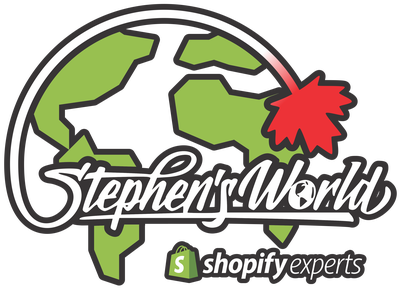Step 3: Choose a Theme (Template/Layout)

This is one of the most important steps in the setup process as it directly dictates how your site can look. Choosing a theme can be a bit tricky, but Shopify has an awesome Theme Store with 60+ themes you can browse, using filters on the left-hand side to help you select the perfect theme for your business.

They do offer a handful of free themes, but in my opinion, they are grossly over-used, so I do recommend going with a paid theme to make your store stand out. Here are some of my personal favourites:
- Parallax
- Retina
- Symmetry
- Blockshop
- Launch
The theme store does have a filtering option for "Industry" but I recommend not using that filter. I'm a firm believer that all Shopify themes can be used for any industry type, as you're able to fully customize it once it's added.
If you can afford to spend a little bit more on your theme, then I would highly recommend going with either the Turbo theme or Flex theme by Out of the Sandbox, over all of the other themes listed above. These two themes are hands-down the best ones to go with, if you're planning on keeping the same theme for multiple years.
Both of these themes are sold exclusively from the Out of the Sandbox website (can't be purchased from the Shopify theme store). Upon purchasing a theme from the OotS website, you'll receive a .zip file containing the theme. To add the theme (.zip file) to your Shopify store, click the 'upload' button on the Themes page of the Shopify admin.

Once you have a theme added - either via the Shopify theme store, or by uploading the .zip file from OotS, manually - you can customize it by:
Logging into your Shopify account > Go to "Online Store" > Click into "Themes" > Click the "Customize" button next to your theme.

From here, you will be able to edit nearly every aspect of how your theme works. Here's a checklist of a few things you will want to make sure you have done:
- Add a logo (usually found in the "Header" settings)
- Customize/add content on the homepage (this will be something you frequently update as you add to the site)
- Add a favicon
- Put in your social media accounts (links to their respective pages)
- Edit your colours

Theme customizations are split into two parts: "Sections" and "Theme Settings".
Theme Settings primarily dictate the general look, feel, and layout of your online store. These are things like colours, fonts, social media links, your favicon (little icon that shows next to tabs in browsers), currency converters, checkout page settings, and more.
The Sections settings are used primarily to control the content that shows on your site. For the homepage, you can add new sections, such as slideshows, products, text, promotional boxes, and more ... the sections available will entirely depend on the theme you've chosen. When on other pages (not the homepage), such as product pages or collection pages, you will have access to edit page-specific settings.
Your best bet is to play around with all of the various settings that are available for your theme, until you have a good idea of what's available, and how things work, before starting the actual setup for your store.
It is possible to further edit your theme, aside from all the options listed in the Customize Theme settings, but it would require knowledge of HTML/CSS/Liquid coding. If you need something to be edited beyond what's offered in the settings, I would highly recommend reaching out to a Shopify Design Expert to make the changes for you. If you do want to give it a shot yourself, definitely remember to make a duplicate copy of your theme before making any changes, so that you can always revert back if you break something.

Need more help with this step? Check out Shopify's help docs for theme customizations by clicking here.

